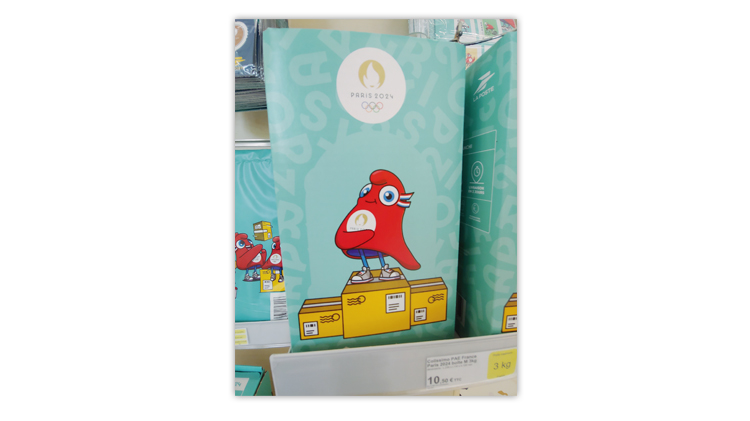World Stamps
Mascot of 2024 Olympic Games in Paris modeled after the famous Phrygian cap

Delivering the Mail by Allen Abel
At the 2024 Olympic Games in Paris, France, athletes and visitors from around the world were able to send postcards and letters home adorned with postage stamps that featured one of the most misunderstood, but meaningful, mascots in the history of the Olympics.
Taken by some observers as simply a red blob with arms and legs, or as a prancing bird, or even as a certain brown triangular emoji, the mascots actually were modeled on the Phrygian caps that were a symbol of liberté (liberty) during the French Revolution of 1789.
Dubbed les Phryges by the organizers, the ever-smiling hat-people appeared on postal stationery, Prêt-à-Envoyer (Ready-to-Send) flat-rate parcel packaging, and on a pane of four stamps for international use, with two of the stamps showing the mascots outfitted as athletes with a disability taking part in the Paralympic Games which follow the Olympics from Aug. 28 to Sept. 8 in Paris.
But many Frenchmen and foreigners were puzzled at first by the mascots that were quite different from the tigers and pandas seen at previous Olympic Games.
“You have the best food, you have the best wine,” a Linn’s correspondent in the City of Light said to a woman named Clarisse, who was staffing the pop-up La Poste counter in the main press center a few blocks north of the Arc de Triomphe.
“And the most beautiful women,” she hastened to add.
“Then why is your Olympic mascot so confusing?” she was asked.
“But it is not!” Clarisse insisted. “You must understand the history behind it. And the double meaning — les Phryges for the French Revolution, and le fridge for refrigerator because it is so cool.”
“You see, we are also the most clever,” Clarisse the postal clerk enthused. “Food, wine, beauty — and cleverness is the cherry on top.”
“It’s not a matter of how it looked,” insisted Joachim Roncin, the graphic designer whose team chose the Phrygian caps as well as the pink and violet art deco color scheme of the 2024 Olympic Games, in an interview with Linn’s. “It’s a matter of what it says. The purpose beats the design,” Roncin said.
“If you have a story with a deep meaning behind it and someone says, ‘Well I don’t like the shape,’ that’s fine, but the meaning is unbeatable,” Roncin said. “It is about freedom. It is about making a revolution through sport.”
“We had several options,” Roncin explained. “We looked at everything that has been done before. We didn’t want to have human figures, small boys and small girls. We thought of the gargoyles of Notre Dame, but Disney had already done that with Quasimodo and we knew we would suffer by comparison.”
“The Phrygian hat was exactly what we wanted to say,” Roncin said, “but I had never worked with plush toys before in three dimensions and the first people who we showed it to said it looked like a samosa [triangular pastry].”
If collectors of Olympic postal material are uninspired by les Phryges, they will not have long to wait for a return to more traditional mascots that take the form of anthropomorphized wildlife.
The organizers of the 2028 Olympic Winter Games, which will be held in Milan and Cortina, Italy, have chosen a pair of stoats (also known as ermines) named Tina and Milo to carry the torch.
Connect with Linn’s Stamp News:
Sign up for our newsletter
Like us on Facebook
Follow us on Twitter
MORE RELATED ARTICLES
Headlines
-
US Stamps
Oct 6, 2024, 5 PMApgar souvenir card available
-
US Stamps
Oct 6, 2024, 4 PMFirst Continental Congress and U.N. stamps receive Scott catalog numbers
-
World Stamps
Oct 5, 2024, 1 PMCanada Post continues Truth and Reconciliation series
-
US Stamps
Oct 4, 2024, 6 PM86th Balpex show set for Oct. 25-27 at new location








